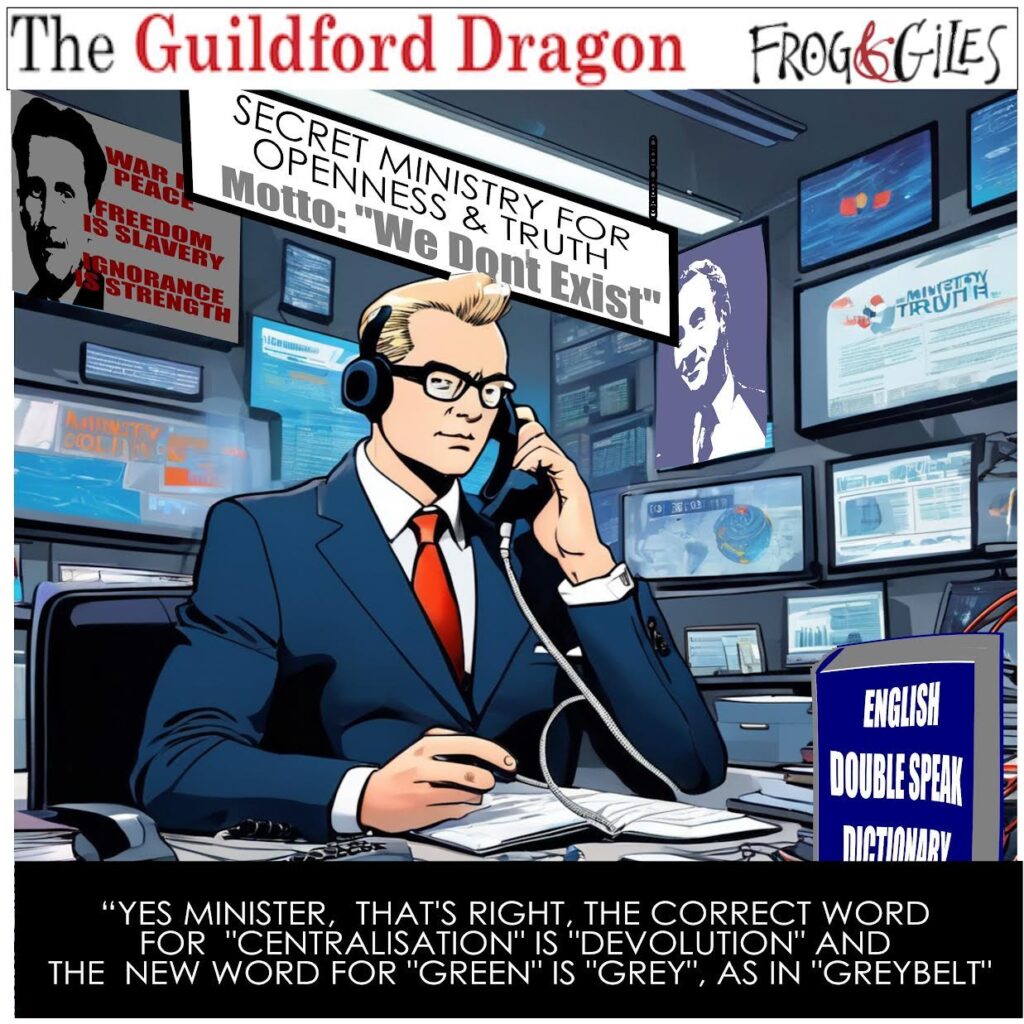- Tuesday, July 22, 2025
- Stay Connected
 Abraham Lincoln
If given the truth, the people can be depended upon to meet any national crisis...
Abraham Lincoln
If given the truth, the people can be depended upon to meet any national crisis...
 Guildford news...
for Guildford people, brought to you by Guildford reporters - Guildford's own news service
Guildford news...
for Guildford people, brought to you by Guildford reporters - Guildford's own news service
German Airship Over Guildford In 1932
Published on: 28 Feb, 2012
Updated on: 28 Feb, 2012
by David Rose
People in Guildford would have been stopped in their tracks when the huge German airship, Graf Zeppelin, appeared over the town in July 1932.
After all, it was barely 17 years since the infamous night in 1915 when the German airship L13 flew over the town and dropped 12 bombs in the St Catherine’s area. That night of terror would have been etched in the memory of many who witnessed the Graf Zeppelin in the inter-war year of 1932.
Fortunately, this time it was a friendly visit. One of those who saw the Graf Zeppelin was a pharmacist who had his shop on Woodbridge Hill. He grabbed his camera and took this rather fine picture of the mighty airship as it hovered above the town.
The picture belongs to Norman Day, whose father, Albert, opened a pharmacy on Woodbridge Hill in 1928. Within a year or so he moved his shop to new premises within a row of three shops where Woodbridge Hill forks into Aldershot Road and Worplesdon Road. Norman later took over the business and ran it until his retirement in the late 1980s.
Unfortunately, Norman was not at home at the time the airship flew over, and therefore has no memories of the event.
However, the aviation magazine Flight reported the visit to Great Britain by the Graf Zeppelin in its issue of July 8, 1932.
It stated: “Once more the German airship Graf Zeppelin has paid a visit to England. Last Saturday morning the airship left her base at Friedrichshafen and arrived over Hanworth Air Park at 6pm, several English people being among her passengers. After circuling the aerodrome the airship made off in the direction of Brooklands where it was the intention to pay a salute to the Duke and Duchess of York. Later the airship returned to Hanworth and was moored in a very short time indeed.
“The manner in which Dr Eckener and his officers and crew brought the airship into Hanworth caused the greatest admiration among those who know what airship handling means. No uncertainty, no hesitation, no mistake however slight.
“After a short stay to change passengers, the airship left Hanworth for a cruise around England paying first a visit to the newly-opened Municipal aerodrome at Portsmouth, then returning towards London and, following the East Coast, making for Scotland. Edinburgh was reached in the early morning of Sunday, July 3, and the return flight to Hanworth was via Glasgow, Liverpool, Birmingham, Gloucester, Bristol, Cardiff, Weston-super-Mare.
“The Graf Zeppelin had made a tour of Great Britain in almost 24 hours and her passengers had greatly enjoyed the flight. After alighting at Hanworth, a number of passengers were taken on board for a short flight around London and when they had been discharged the airship took on board her German passengers and set off for home.
“At Hanworth thousands of spectators saw the airship on both days and the huge crowds behaved admirably, refraining from breaking out of the enclosures until the airship was safely moored.”
It’s reckoned that the Graf Zeppelin ( LZ-127) was the most successful Zeppelin airship ever built. It was christened “Graf Zeppelin” by the daughter of Ferdinand Graf von Zeppelin, on July 8, 1928, at date which would have been the late count’s and Zeppelin designer’s 90th birthday.
It flew for nine years, clocking up over a million miles, on 590 flights, carrying thousands of passengers and hundreds of thousands of pounds of freight and mail, all with safety and speed. The fact that it circled the globe meant that it was famous throughout the world.
Previous to its visit here in 1932, the Graf Zeppelin had been seen in Britain in both 1930 and 1931. It arrived at London on April 26, 1930, flying over Buckingham Palace and along the Thames before heading towards Wembley where King George V was watching the FA Cup Final being played between Arsenal and Huddersfield.
It is said that when the airship cast its huge shadow over the packed stadium the crowd were none too pleased. The story goes that their jeers sounded like cheers to the airship’s crew, so they kept the airship hanging low for some time before departing for the British airship base at Cardington near Bedford.
The airship returned to London the following year, arriving at Hanworth on August 18, before embarking on a 24-hour flight around Britain.
Dr Hugo Eckener (mentioned in the Flight magazine report) was the manager of Luftschiffbau Zeppelin during the inter-war years, and was commander of the Graf Zeppelin for most of its record-setting flights around the world.


















Recent Comments